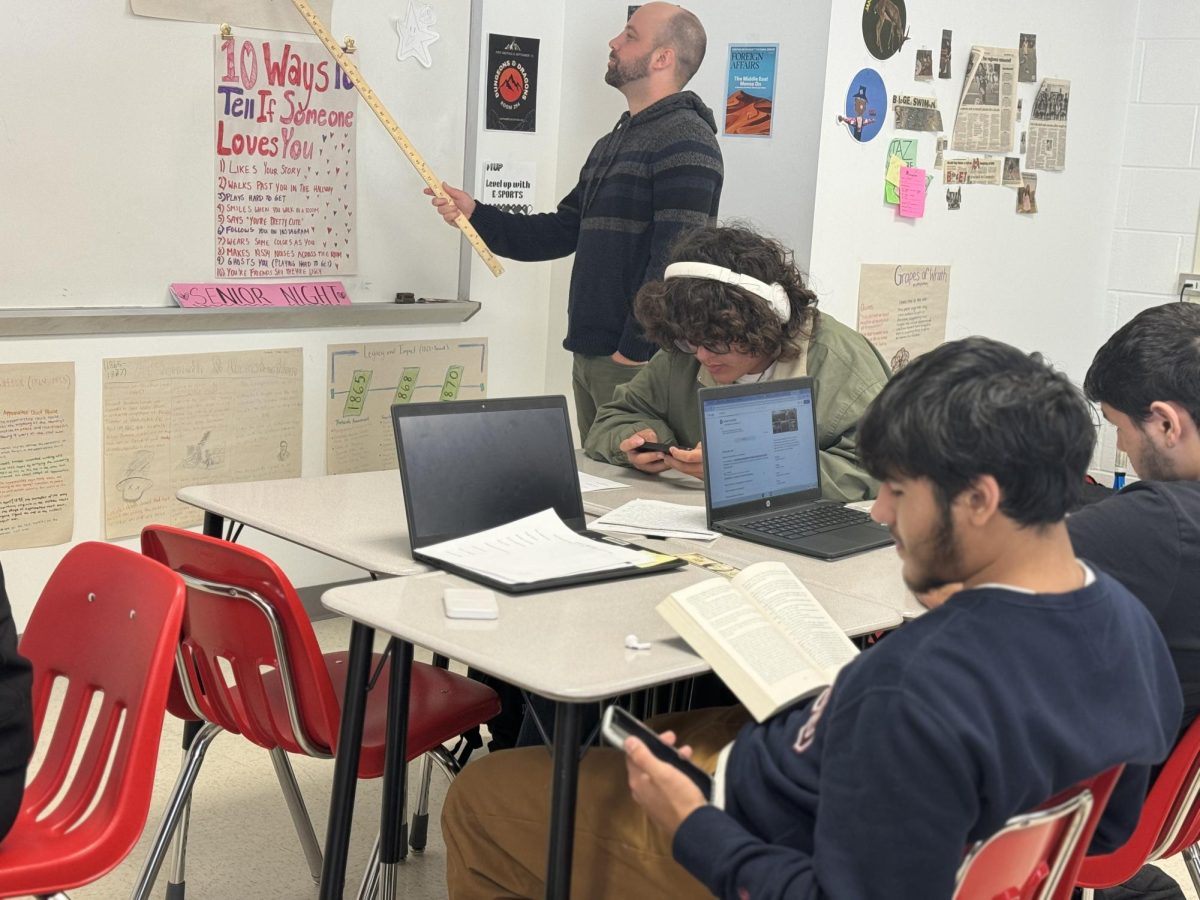In past years, as today, AHS has served as a major school for military families from all branches of the armed forces. With its strategic proximity to Fort Belvoir, the Pentagon and Quantico Marine Base, Annandale served as a convenient place for a variety of military families to live in, allowing parents to work near home and students to study at AHS.
The D.C. Metropolitan Area was home to about 58,378 military personnel in 1980, and numbers increased to 67,059 in 1990. Residence continues to grow, due to American involvement in Iraq, Afghanistan and other territories. As of 2000, Fairfax County has become home to over 7,000 military personnel. According to the U.S. National Census Bureau, almost 300 of these individuals choose to live in Annandale, due to geographic proximity, mobility, and the comfortable vibe of the area itself.
Annandale was a popular destination for military families in the 1950s and 60s.
“I attended AHS from 1962 to 65 while my dad was stationed in the Pentagon, and many of my fellow students had a father in the military,” AHS class of 1965 alumnus Jim Larkins said.
Several military families chose to send their students to AHS in the ‘60s and ‘70s due to athletics.
“My dad was in the Navy, and we moved here from Maine when I was 11. We found that AHS had one of the best football teams in the country,” said AHS football coach and class of 1975 alumnus Dick Adams.
“Annandale was also considered affluent, so most of the students’ parents were either military personnel or blue-collar workers who got directed to AHS when they asked for good athletic programs at work,” he said.
This large military population played a major role in many wars and protests that occurred in AHS at the time.
“Many in AHS, including athletes and teachers, were supportive of the [Vietnam] War, and opposed to the protests that were beginning. It was a collision of world views,” said AHS class of 1975 alumnus Daniel Butler.
Ongoing wars also directly affected AHS graduates from this time period. “War was a very real prospect for AHS students in the 1960s and 70s,” Larkins said. “Vietnam had a huge impact on young males in the 60s and early 70s. I went to college and was able to earn a bachelor’s degree in 1969, and I ended up landing a job with the Air Force and was sent to Clark AB, Philippines in 1972.”
“The possibility of getting killed in Vietnam was a very real one for my generation,” Beste said.
“My own involvement with the Vietnam war began earlier, in 1966, when two of my three older brothers were sent [there]. My third older brother applied for Conscious Objector Status and was awaiting a hearing around that time. My friends were all registering for the draft that spring and summer.”
The Anti-War movement was also extremely popular at AHS during the time period. “Several of us attended a workshop at American University about a Moratium against the war,” said Beste.
“During the academic year of 1969 to 70 at Annandale, there also was a beginning of an ‘underground newspaper’ that reported on the social action-type stuff, neat music groups and so forth. One of my best friends worked on that newspaper, and we went one afternoon to the University of Maryland to cover a demonstration against the war and we got tear-gassed along with the crowd,” she said.
War protests were very common in AHS around the 1960s. The Kent State shooting was one of the major events that caused an outpouring of emotion among the AHS community.
“Many of us students wore black armbands the day after the Kent State Massacre, and tried to put up black crepe paper as a sign of mourning. Many of the teachers, especially the ex-military were incensed, and would rip off any armbands and crepe paper they saw in the halls,” Beste said.
This incensed atmosphere died down around the 1970s, by which time many AHS teachers entered the high school as freshmen. “I don’t remember anything serious going on in AHS when I was in school,” Coach Adams said. “Some people who were seriously against Vietnam and stuff were riled up, but protests were few and far in between.”
Yet, AHS remained a great place for military families to stay, and for military kids to grow up.
“I remember growing up in North Springfield, and almost everyone’s father was an officer in the armed forces,” said Jamie Carayiannis, an AHS administrator and class of 1976 alumnus. “We were all from similar backgrounds, and none of us had a lot of money. Many of my friends were military brats too— we would go to the underground Pentagon sports facility, and we’d play handball there.”This picture of the back parking lot from the ’60s highlights the radical change AHS has gone through in the past few decades.
“Many of my friends also had families in the military, and they often switched homes. One of my best friends had a house in North Springfield, which they rented out to another military family when they were posted in Germany,” AHS alumnis Mike Scott said.
Despite the changing times, AHS still continues to be a fairly popular school for military students and families. With about 1.8 percent of the student population seeking to enroll in the armed forces, several students have been influenced by the military in one way of another— be it through the recruitment tables in lunch, or the Annual AHS Military Fair.
Many students who roam the halls have parents or relatives in the armed forces and add the AHS experience to their ever-growing list of the places they have seen.






Jim Larkins • Nov 21, 2009 at 4:36 pm
Excellent article Ash! Comment on the last photo–looks like a 1950s photo…I don’t see any cars from the 1960s.